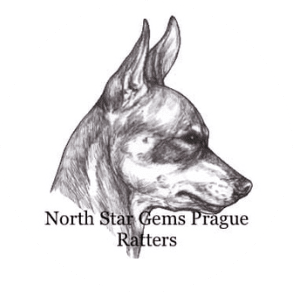Training your own Prague Ratter As A Service Dog For PTSD & Anxiety

Title: Training Your Own Dog as a Service Animal for PTSD and Anxiety
Introduction:
Post-Traumatic Stress Disorder (PTSD) and anxiety are serious mental health conditions that can have a debilitating impact on an individual's daily life. Service dogs have been proven to provide great help and support for individuals dealing with these conditions. By training your own Prague Ratter to become a service animal, you can potentially enhance your quality of life and promote your independence. This blog will outline the steps and considerations involved in training your own Prague Ratter to be a service dog for PTSD and anxiety.
Step 1: Assessing Suitability
The first step in training your own service dog is to ensure that your own dog possesses the necessary temperament and qualities required for this role. Service dogs should be friendly, calm, and show a willingness to please. They should have good focus, intelligent and be receptive to training. Additionally, consider their size, Prague Ratters are the perfect size. Prague Ratters are a most versatile breed.
Step 2: Identifying Tasks
Identifying the specific tasks your Prague Ratter will be trained to perform is crucial. Each individual's needs vary, but common tasks for a PTSD and anxiety service dog include:
- Alerting to panic attacks or episodes of high anxiety.
- Creating physical space and acting as a buffer between their handler and others.
- Turning on lights or searching rooms to ensure safety.
- Retrieving medication or a safety kit during episodes.
- Guiding the handler to safety in public places.
Step 3: Basic Obedience Training
Before delving into specialized tasks, your Prague Ratter must first undergo basic obedience training. This includes commands such as sit, stay, down, come, and heel. The dog should also learn good manners, including not jumping on people or behaving aggressively. Consistency, positive reinforcement, and patience are key during this phase.
Step 4: Task Training
After completion of basic obedience training, you can start teaching your dog the specific tasks required to assist you with your PTSD and anxiety. Professional guidance from a qualified dog trainer experienced in service dog training is highly recommended. They can help you design a task-training program tailored to your specific needs.
Step 5: Public Access Training
Service dogs need to feel at ease in various public settings. Training your dog to remain calm, focused, and well-behaved in crowded areas, around distractions, and near other animals is vital. Exposure to different environments, such as shopping centers, parks, restaurants, and public transportation, should be gradually introduced to ensure your dog can handle these situations effectively.
Step 6: Legal Considerations and Regulation
It is crucial to familiarize yourself with the legal requirements surrounding service animals, as they vary between countries and regions. Ensure your dog meets the necessary health and vaccination requirements, and be prepared to provide proper documentation when required. Understanding your rights and responsibilities as a handler is essential.
Step 7: Continuing Education and Maintenance
Training your dog should be an ongoing process. Continue to reinforce learned tasks, practice obedience commands, and expose your dog to new environments. Regular veterinary care, exercise, and mental stimulation are also crucial for maintaining your dog's overall well-being and to sustain their ability to serve you effectively.
Conclusion:
Training your own Prague Ratter to become a service animal for PTSD and anxiety is an extended and challenging process, but the rewards are immense. Not only will you have a companion who can assist you, but you will also experience a newfound sense of independence and security. By carefully selecting the right dog, identifying appropriate tasks, and investing time and effort into training, you can develop a strong bond with your dog while benefiting from the invaluable support provided by a service animal. ❤️
Reach Out
North Star Gems
Have questions about Prague Ratters or our services? Want to know more about our adorable puppies? We'd love to hear from you! Please fill out the contact form below, and we'll get back to you as soon as possible.
